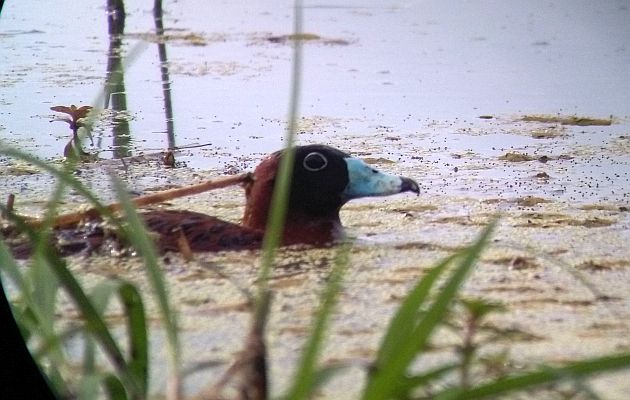
Most birders know what a nemesis bird is and, most of all, what that truly means. It happens to every birder and it may take a while but eventually, every person who strives to see different species of birds comes across that one warbler, that particular shorebird or bunting or crossbill that they really, honestly, should have seen. Basically, you know it might be a nemesis when you keep trying and the bird stays elusive. Other people see it just before you arrive, or just after, but there’s no soup for you! You may go to the perfect habitat, at the perfect time, and in the best of conditions and see many other birds, even rare ones (!), but the one you really need to see will be taking some avian break in the lost dimension of the nemesis. People may even tell you, “Oh yeah, just wait by that tree at 5 p.m.and the bird will show! It’s been doing that for the last three years, just like clock work.” This will give you hope beyond hope but when you have to tell them that the bird didn’t appear and they just look at you with doubtful eyes and a perplexed look, yes, sadly, your missing bird can be diagnosed as a true NEMESIS.
Nemesis status doesn’t happen overnight, nor with one or even two chances at seeing a bird. No, the pathway for a bird achieving the nefarious nemesis title is one of many steps, each one more frustrating than the last. The journey is akin to that of an annoying dream, a semi-nightmare with a limbo landscape of sand punctuated by hopeful waypoints. You trudge steadily towards each sign of hope, and are sure that the golden point up ahead will surely be the last, final one that takes you back up to the mother ship or nearest Italian bakery, but then, unbelievably, just as you reach for it, your main goal vanishes into thin air. Crestfallen, you scratch your head and wonder where to trudge to next when another distant waypoint appears. There’s the way out! Therein lies redemption! With an upbeat spirit, you practically run towards that spot of hope but just as with the previous one, it too, disappears just as you arrive. This happens again. And again and again until you accept that the bird might not be all that into you… That the ways of the universe might be working against you. Or, it’s just “bad luck”, that the laws of probability just have not worked in your favor.
However, if there’s a good thing about the laws of probability and birding, it’s that the longer you don’t see a bird when you “should”, the more likely you will see that bird with every try. Because what are the chances? You can’t miss a bird every single time? It might seem to be like that for a nemesis species but eventually, even those tricky nefarious ones will be seen. A few days ago, I finally saw my main, number one nemesis but in keeping with its nemesis status, it couldn’t have happened without a few more trials and tribulations.
My former nemesis was the Masked Duck. Yes, I know that lots of birders have seen it at those wetlands in Florida and yes, it has a wide distribution, and yes, I have birded in places where it occurs for many years but that’s exactly why it was a nemesis. As much as I looked for it in the right places, the pirate duck stayed elusive. I have seen a lot of other birds, some much more rare and endangered than this but once again, this is why it was my nemesis. I wasn’t so concerned though, I eventually took a Zen approach with this bird and figured I would see it at some point. A few days ago, that special time and place did indeed converge but getting there wasn’t without help from a few friends, nor did I arrive without passing through another trial or two. These were some of those final steps to my lifer Masked Duck:
A Distant Site
The most reliable spot for Masked Duck in Costa Rica is the site known as “Las Pangas” in the Coto wetlands. It also shows there every year! But, since those exciting wetlands are a 5 hour drive and I often have other more important things to do closer to home, trips to Las Pangas are easily postponed.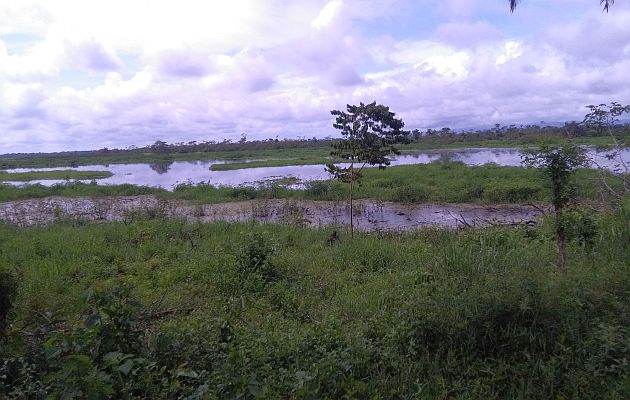
A Guiding Trip
It makes all the difference when a guiding trip coincides with a site for a nemesis bird. Thanks to world birder Pirjo Lasko, she and her husband Bjorne graciously brought me to help her find various target species. Since she also wanted me to see that Masked Duck, our main plan was to bird the Las Pangas Coto area.
The Tribulations of Pandemic Birding
These are days of restrictions and Costa Rica is no exception. With driving restrictions in place for much of August, although I knew that the ducks were present, I simply could not drive there. The restrictions were also confusing. Would they be lifted on August 22 like the government had said? Would modifications of those restrictions still make it impossible to drive to a date with my nemesis? I didn’t know until a few days before the trip but yes, on August 24th, we could definitely drive to Las Pangas!
When it Rains, Bridges Can Get Washed Out
Yes, we could drive there but not on the easy, coastal route. Heavy rains had damaged a bridge just a few days before our departure and it would be closed. There was another route but it involved a necessary detour over winding mountain roads that tacked more than an hour onto driving time. However, on the day of departure, Waze showed our route crossing the bridge. It hadn’t been fixed but the locals had made some sort of river crossing. Fantastic! No curvy roads! Just easy-going coastal driving, maybe we could even stop for birds? We did stop a few times and we even picked up a country Eurasian Collared-Dove on the way! BUT, when we reached the turn-off for the road to the bridge, a police officer with bright green traffic cones was there, blocking the road. No, there was no passage. Yes, we had to take the winding mountain road.
Detour to San Vito
Rolling with the changes, since we still needed a few birds in San Vito, we curved our way up to that pleasant town and birded the Cerro Paraguas road. The road was somewhat rough, it eventually turned to slick, tropical mud, we didn’t see any of our main targets, and it started to rain. We exchanged that rocky, bumpy road for the smooth lanes of the main byway to Ciudad Neily and the car started pulling left, the right front wheel made an odd screeching noise, and we pulled off the road.
The Car Breaks
Sure enough, that odd noise wasn’t just for kicks. The car was screaming because the tire was on the road at an odd angle, at one that isn’t conducive with normal, healthy driving. Yeah, the car was broke. We didn’t know by how much but we did know that driving it would have broken it more and maybe killed us so we sat in the vehicle as the rain came down outside and made some calls.
Birders to the Rescue!
There’s nothing like knowing people who are more than willing to help you when you need it. That’s of course, what friends are for, it’s what makes this world a better place and it’s a reminder to pass that help forward at all times. Randall Jimenez Borbon had already been helpful in giving me gen. on target birds in San Vito, he continued along those lines by immediately helping us connect with a tow truck and mechanic. A local birder, Randall keeps up the good work by helping people connect with birds at Finca Cantaros. The car was towed and taken care of but where would we stay for the night? Pirjo resolved that by calling Pepe at Casa Botania. Another local birder and experienced guide, Pepe came right over to help us out and bring us to Casa Botania. Other birders who offered help and would have also come to our rescue include Greg Homer and Alison Olivieri of the San Vito Birding Club. Many many thanks to all of these people!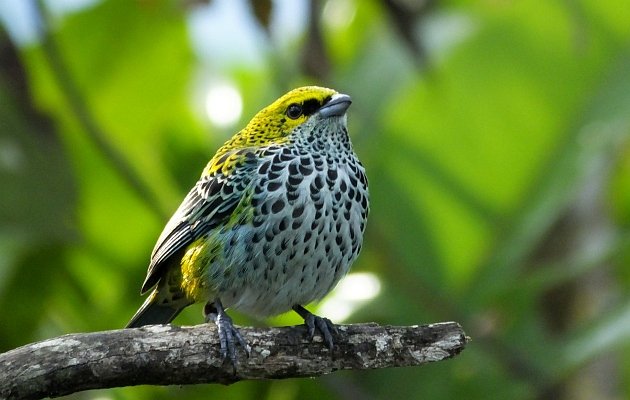
San Vito is a great place for photos of Speckled Tanager.
Birding Las Pangas
We had a place to stay and it’s an excellent friendly, recommended site but it wasn’t exactly next door to the Masked Duck. Once again, Pirjo resolved that by arranging for Pepe to drive and co-guide for a day of birding at Las Pangas. This involved a drive down another winding mountain road to the lowland town of Ciudad Neilly and onward. Nestled within large areas planted with Oil Palms, Las Pangas is a huge area of rice fields and natural wetlands associated with the Rio Colorado. With so much habitat, it’s one of those places where you feel like any number of rare birds are possible.
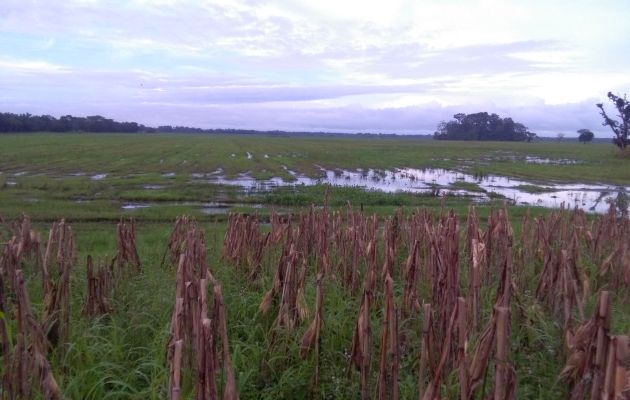
After watching some shorebirds in a large puddle, we made a bee-line to the duck spot. In breaking with nemesis protocol, this time, the ducks were there, they were close, and we could watch them as long as we wanted.
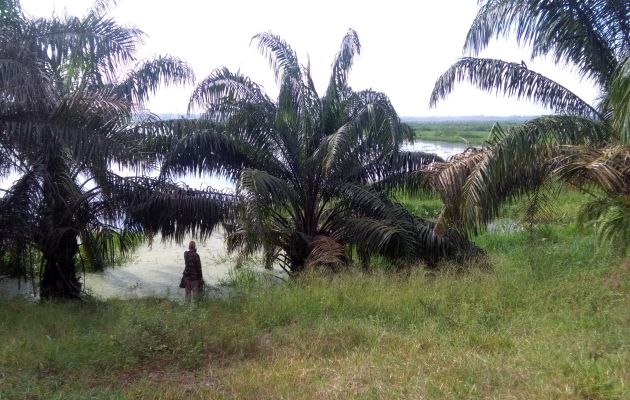
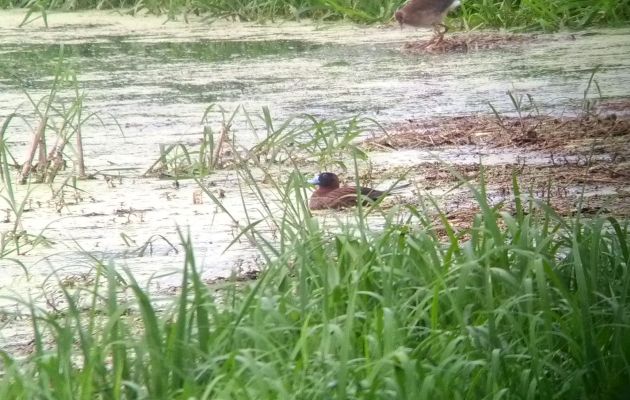
It was surreal to finally lay eyes on this bird.
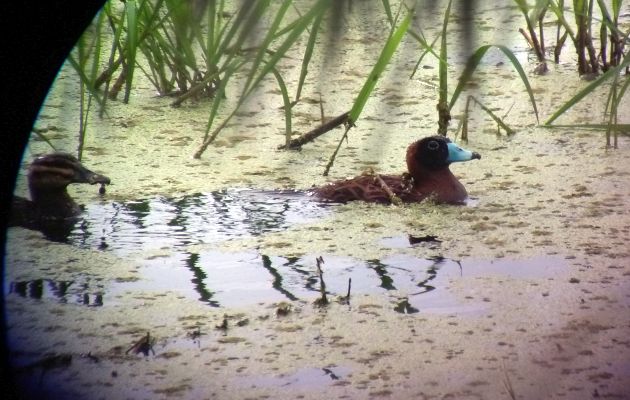
In total, I saw three males and one female, two of them at very close range. Even better than removing nemesis status from this species was watching them do their Masked Duck thing. Unlike many other ducks, this species was stealth in action. They moved very slowly with most of their bodies under the water, hid in plain sight behind bits of vegetation, and submerged in silence like miniature submarines!

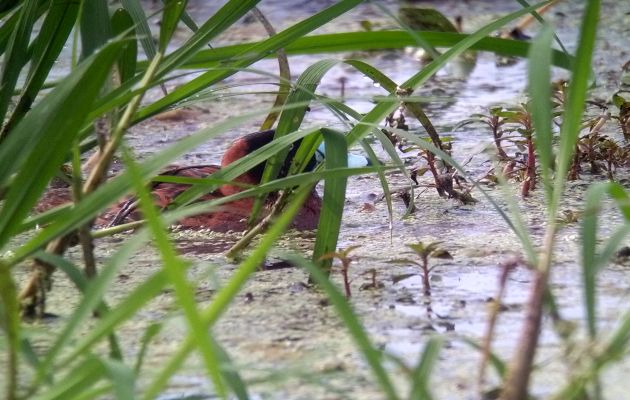
After getting our fill of Masked Duck, we focused on searching for shorebirds, rails, and whatever else might come our way. There were plenty of birds to look at and several of them, like Brown-throated Parakeet, Rusty-margined Flycatcher, and Sapphire-throated Hummingbird, were specialties of that area. Other highlights from that morning included hearing another Masked Duck in a flooded rice field and seeing a perched Gray-lined Hawk before driving back up to the San Vito area where we birded on and eventually saw a very sneaky Ruddy Foliage-gleaner and a Chriqui (Olive-crowned) Yellowthroat.
The Car is Fixed, on to the Hotel Fortuna Verde
Incredibly, the vehicle did not require a new ball joint, nor anything else that might have taken days to fix. It only needed a few screws to reattach and adjust a piece of the suspension that had come loose. With that in mind, we drove down to our original destination near Ciudad Neilly, the Hotel Fortuna Verde. Run by friendly, accommodating people, this basic hotel acts as a good spot for explore the surrounding area and also has an interesting patch of forest out back. I had hoped to look for owls there but constant rain kept us from finding anything.
Las Pangas Again and a Long Drive Back
The following morning saw us back at Las Pangas, this time birding in light rain. Exploration of the area rewarded us with chance views of a normally super elusive Gray-breasted Crake, hearing Paint-billed Crakes, and views of Wilson’s Phalaropes spinning in circles. It was another memorable morning of birding that left me looking forward to making a trip back. The next time I go back, I won’t have any nemesis birds to look for but the trip will come with the promise of fun, exciting birding shared with people who would also drive hours to see a duck.
I suppose the best thing about a nemesis bird is seeing lots of other birds during the journey. When those views of spinning phalaropes, calling bellbirds, and beautiful forest mornings of birdsong are co-experienced with other folks who share the avian passion, the path to a nemesis is nothing but golden.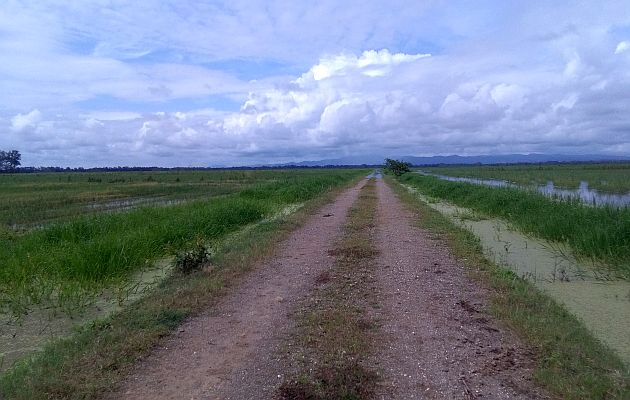


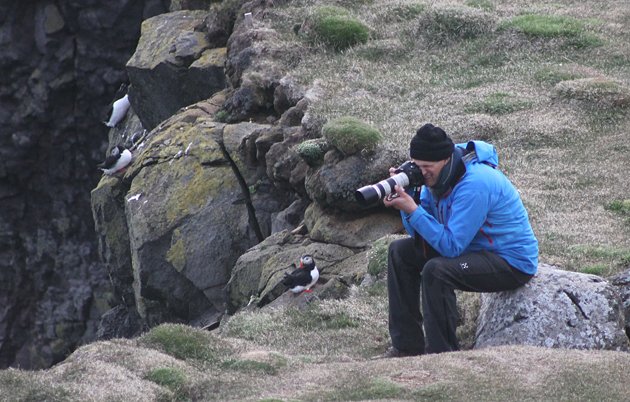
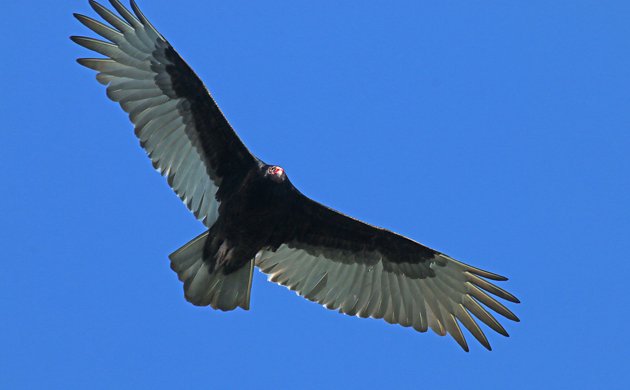

 New writers welcome – please contact us for details.
New writers welcome – please contact us for details.

















Congrats on defeating your old nemesis, Patrick! Who is your new one?
Thanks Mike! I’m not sure if I have one yet, maybe Yellow Rail?
Congratulations on the duck, Pat! And also on the article!
That law of probability you were thinking about — It’s called the “Gambler’s Fallacy”. If you keep flipping a coin, every time you flip, the chances of getting heads is always 50%, regardless of how many tails in a row you just got.
But yeah. If you stop going out to look for Masked Ducks, then for sure you aren’t going to see any. So you gotta keep looking in places where you have a chance. (Keep flipping the coin!) I have to say your Masked Ducks are much easier to see than the ones we saw in Buenos Aires, lurking in green scum with only the tops of their heads visible. We wouldn’t have known they were there until our guide pointed them out.
Right now my nemesis birds are the ones my wife saw when I was looking elsewhere and they flew away before I saw them. The list is growing.
Loved the story, very entertaining and a happy ending. One of your best!
A very fun read!!! I think my husband can finally relate to his nemesis and can be less frustrated!!?
For too many years my Nemesis was the Cape Rockjumper. I live in Europe, the bird is in South Africa – adding to the pain of missing out on the “dead cert” (7 times/years to Rooi Els, nothing). And then one day, I saw it and on the way back my birding buddy Bas and I saw a Streaked Flufftail – way harder to see than the Rockjumper… A new Nemesis is developing already, of course. It never stops.